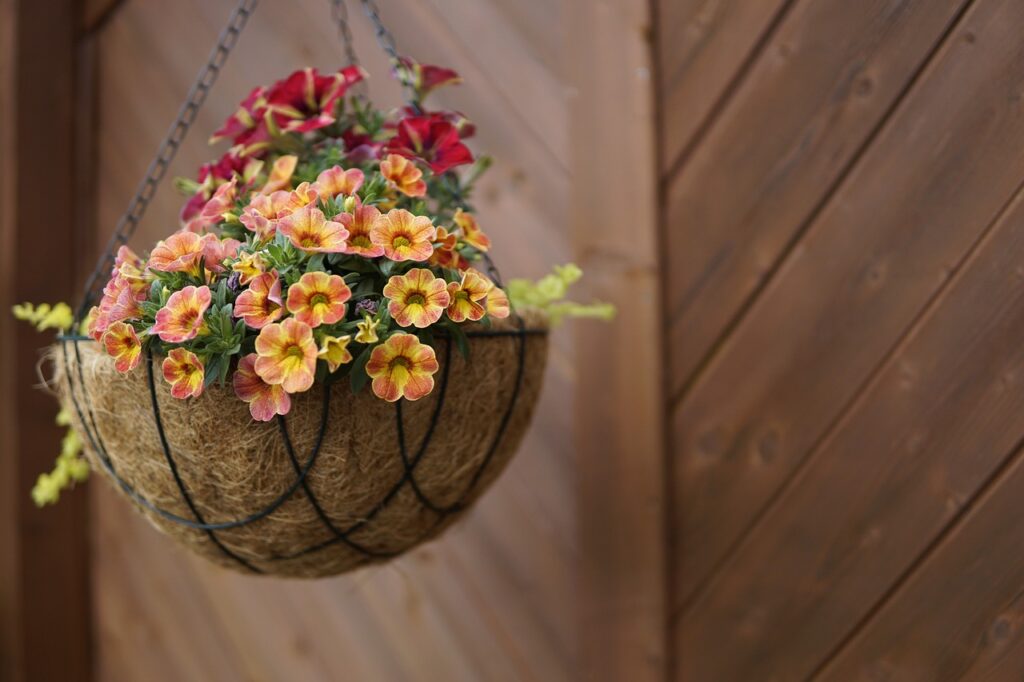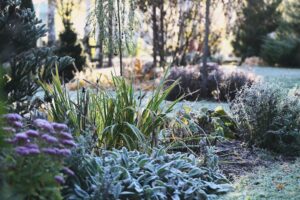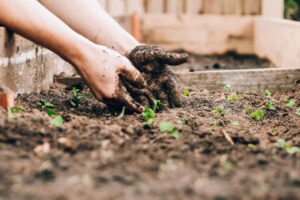No space? No problem!
Many of us have very limited, or no, access to outside space leaving gardening far from reach. But by growing plants in containers, gardening can become much more accessible.
Container gardening can be as simple as growing a plant on a windowsill or having a pot outside your back door or balcony. It’s an easy way to grow your own plants or veg in virtually no space, adding a splash of colour for instant and ever-changing displays.
What sort of container do I need for container gardening?
Almost anything can be made into a container for gardening, from old buckets, clean food tins, plastic milk cartons, or even an old Wellington boot. You can also find a variety of pots in your local garden centre. The things to consider are the size of the area you are planning to place the container, the size of the plants you want to grow and ensuring your container has drainage – essentially a hole or holes in the bottom.
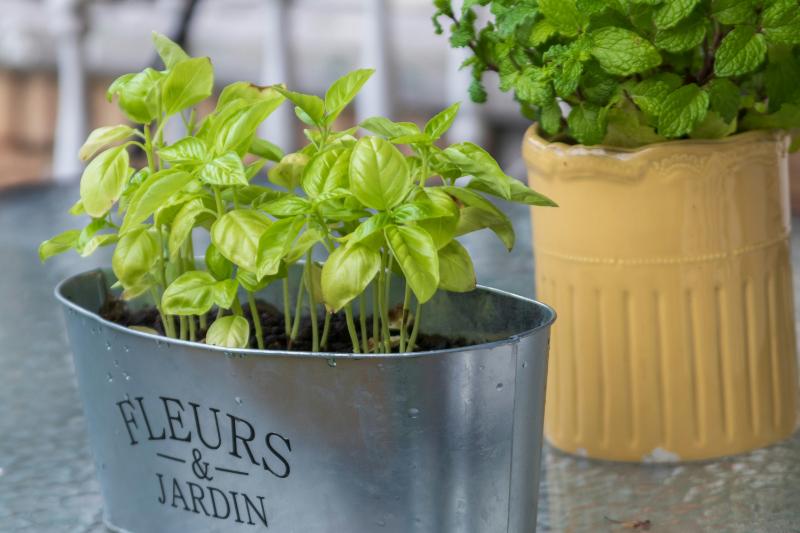
What can I grow in a garden container?
The only limit is your imagination! Even shrubs and trees can be grown in a container if you have a small courtyard to pop them into.
If you are growing on a windowsill, think about what you would like to see, touch and smell daily – herbs and tomatoes are especially good to have in a kitchen or just outside the back door so that you can use your homegrown produce directly. In one pot you could grow a pizza garden with a tomato plant, basil, and oregano. Or you could even grow a gin garden with your favourite botanicals – thyme, rosemary, pineapple sage, and lemon balm. Plant to your taste and grow what you love.
For outside containers, consider the amount of sun your area receives and choose your plants accordingly. Shade-loving plants such as ferns, ivy, hardy geraniums, or hostas are ideal for container gardening. If you have a sunny spot, think about salvias, Busy Lizzie’s and feather grasses. Sunny spots are also ideal for a salad garden. Lettuce has very shallow roots which makes it ideal for container gardening and cut-and-come-again varieties could keep you going throughout the summer months.
Is container gardening high maintenance?
Container gardening can be as high or low maintenance as you would like it to be. Some plants, such as alpines, succulents or sedums need very little to grow; just a shallow container, lots of drainage and a gritty soil mix will allow them to thrive without constant care. A Hebe (evergreen), achillea or eryngium can be left to their own devices and will also come back year after year.
On the other hand, tomatoes and lettuce will need lots of water and many flowering plants do benefit from deadheading.
While planning your container garden, consider the amount of time you will have available to dedicate to your new project and plant accordingly.
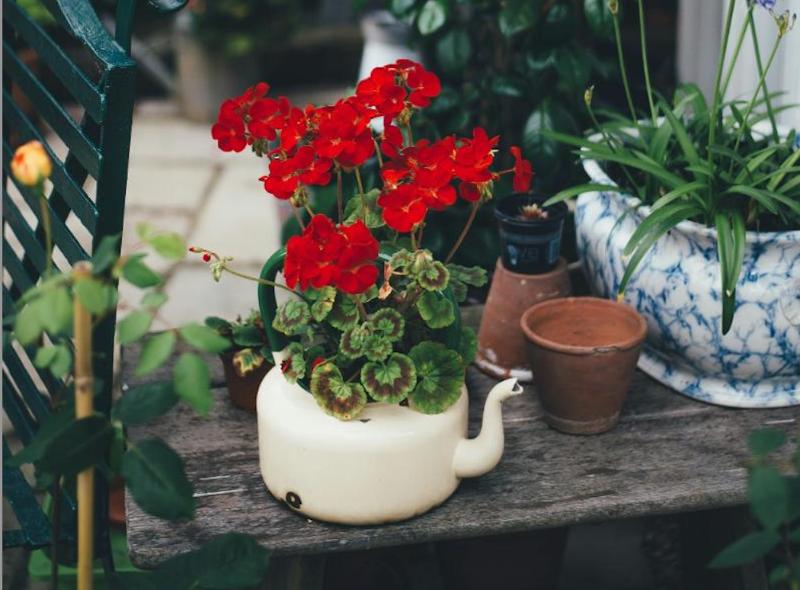
How to build a container garden
To set up your new container garden you will need:
- A container
- Some good quality growing material
- Plants
- Water
- Gravel, stones or bark chip (optional)
If you are planting up a larger container, consider doing it in the spot where it will live so that you don’t have to carry a heavy pot to the right space once it’s planted up.
- Ensure your chosen container has drainage holes in the bottom. If they are not already there, you can drill or carefully poke through. These holes will allow excess water to drain out. If the holes are too big and may allow the compost to fall through, cover them lightly with some stones or crock (broken tiles or terracotta).
- Fill your container with good quality, peat-free compost to a level where you can place your plants on top without them spilling over.
- Remove the plants from their pots and place them in the container. Now is your chance to move them around, considering the angle that they will be viewed from and think about placing taller plants at the back or centre.
- Once you are happy with your display, add more peat-free compost around the plants, filling in all of the spaces. Gently firm down your plants and compost and leave a small gap between the top of the compost and the lip of the container so that the compost doesn’t spill over.
- Water your container garden well. Try and do so slowly so that the water can soak through.
- It’s worth considering covering any bare soil with a thin layer of gravel, stones, or bark chip. This will stop water from evaporating too quickly from the compost and help to suppress potential weed growth.
How to care for a container garden
Plants in containers often need more watering than those in the ground but the amount will depend on the plants you’ve chosen to grow. Young and freshly planted items often need watering well until they are established but there are plenty of drought-tolerant plants which can be left for much longer periods without any bother. Long, hot summer days will dry pots out quickly, especially if they are sat in the full sun and during these periods, try to water your plants in the early morning or evening, not when the sun is shining fully on them.
- Check the moisture level of your container garden by feeling down into the pot, rather than relying on just the top layer. A light rainfall can make the compost look wet but checking perhaps a third of the way down; you may find things are very dry.
- Water slowly so that the water can soak down through the full depth of the compost.
- Flowering plants may benefit from ‘deadheading’ which simply means removing fading or dead flowers from the plant which will encourage more blooms. You can use a pair of secateurs, some scissors or just pinch off with your fingers.
- Certain plants may require additional feeding during the growing season. An all-purpose fertiliser can be used, following the instructions on the product.
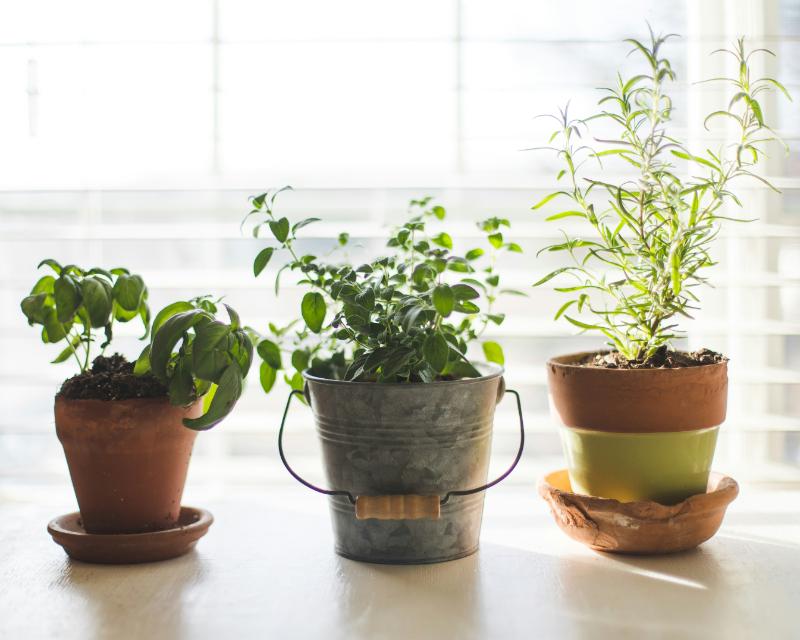
Top tips for container gardening
- Choose the right plants for the right location – no joy will come from planting a plant that requires full sun in a shady spot. Work with what you have for successful container gardening.
- Choose the right compost – many people think that dirt is dirt but good quality, peat free compost will retain moisture, contain no weed seeds or spores, and have the right nutrients for your plants to thrive.
- Choose the right container – growing a large plant in a small pot will mean the plant becomes ‘pot bound’ very quickly and not grow to its full potential or even fail completely.
- Consider the “thriller, filler, spiller” technique – if you are growing multiple plants in one container. Choose a “thriller” which is tall and bold, a “filler” which is medium height and fills the space and then a “spiller” which trails over the edge of your pot.
- Grow what you love – if you hate tomatoes, don’t grow tomatoes! So grow the veg or plants you would like to see in your space!
Earth Cycle products for your container garden
If you like the sound of creating your own container garden, Earth Cycle is here to help make that a reality!
Depending on how big your container is, you’ll need plenty of compost and topsoil for a successful container garden. Our Compost Soil Conditioner is the perfect compost to use to give your plants all the nutrients they need. If you are planning on planting some veg in your container, then our Vegetable Compost teamed with our Vegetable Topsoil will be the perfect choice for you.

